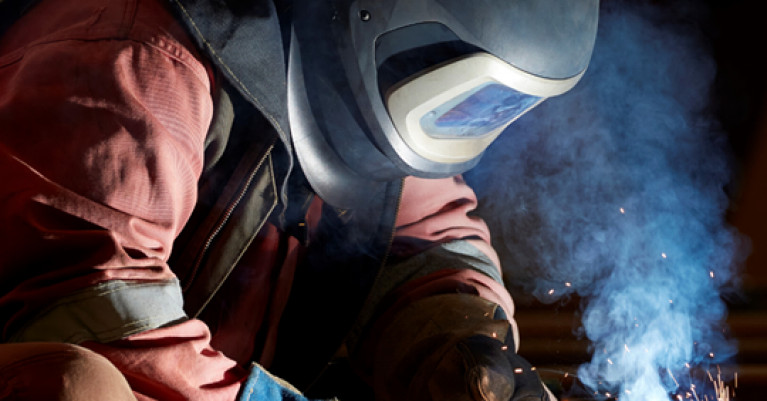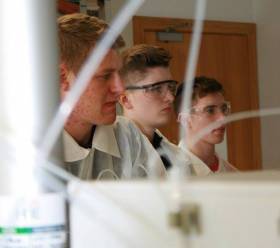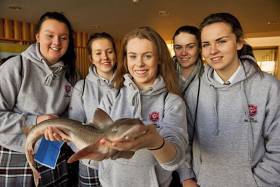Displaying items by tag: Careers
Following the recent acquisition of two Scottish based sites, Infratrata, owners of Belfast shipyard Harland & Wolff, is to open to prospective employees a careers open day.
The careers open day is to take place at H&W's (Methil) Forth of Fifth site this Thursday, 2nd June and aims to set a solid workforce foundation in preparation for its highly anticipated new contracts. (See related ESB offshore wind project story).
It will provide an opportunity to meet and speak with existing Harland & Wolff employees who can share their experiences of working with the iconic brand.
The careers event day will run from 10am – 7.30pm, with prospective employees booking a time slot.
Prospective employees should register to attend here.
#MarineScience - Over 20 Transition Year students participated in a wide range of activities at the Marine Institute as part of Engineering Week this past week from Monday 27 February to Friday 3 March.
For the third annual TY training week at the Marine Institute headquarters in Oranmore, the fourth-year pupils from Mayo, Galway, Kerry, Cork and Tralee increased their understanding of and interest in marine science, research engineering and technology careers.
Scientists and staff from the State agency responsible for marine research and innovation welcomed the opportunity to share their passion and insights across a wide range of areas in the marine science and maritime sectors.
Ireland's marine sector is a vibrant part of our national economy and the need for education in the marine sector at all levels is highlighted by Ireland's Integrated Marine Plan, Harnessing Our Ocean Wealth, according to Marine Institute chief executive Dr Peter Heffernan.
“Increasing the student's knowledge and engagement with marine careers in science, technology and innovation, as well as the sustainable development and management of our marine resource, is key to support Ireland's ocean economy, where highly qualified and skilled professionals are needed in the coming years,” he added.
The annual TY training course offers students an intensive week of shadowing scientists and staff learning about marine science, technology and engineering as well as a range of diverse supporting disciplines.
Promoting ocean literacy, the students took part in interactive experiments involving IT applications, marine environment and food safety, fisheries sciences, research vessel operations as well as advanced mapping, maritime development and communications.
The students found themselves working with hairdryers, balls and vinegar learning about data collection to how human industrial activities affect the increased levels of carbon dioxide in the ocean.
Interactive activities included dressing up in wet gear, forming sand sculptures of shipwrecks and working on group poster presentations provided learning opportunities that extended their skills and interests as well as raising their awareness about the ocean.
“With the training week fully booked out, we were delighted to see the increased levels of interest and understanding of the marine and the direct benefits of the communications and team building training that form an essential part of this rounded programme,” said Marine Institute HR manager Catherine Quigley-Johnston.
The programme aims to ensure a diverse and well-educated generation of marine scientists and researchers for the future, she added.
“The feedback from students confirms the need for industry and third level institutes, as well as State agencies to promote training and access for young people in marine and maritime careers.
“The training programme also highlights the effort and willingness of the Institute's staff to share their areas of expertise with the younger generations. This is what helps makes TY open days and training weeks so successful,” said Quigley-Johnston.
Open Day For All At Marine Institute This Week
#MarineScience - The Marine Institute welcomed over 250 visitors to its headquarters in Oranmore for the maritime innovation agency’s annual open day on Wednesday (23 November).
Organised as part of the Galway Science & Technology Festival and designed mainly for Transition Year students, this year the Marine Institute decided to open its doors to all, and attracted Leaving Cert students, teachers and parents, plus university and community groups from across the country.
Visitors had the opportunity to tour the state-of-the-art facilities in Oranmore and to meet with researchers and scientists and hear about their careers in the marine sector, which already supports over 30,000 direct and indirect jobs.
The institute also organised a series of interactive exhibitions to introduce visitors to some of the innovative work happening in areas including seabed mapping, research vessel operations and oceanography, as well as fisheries and the marine environment.
Find out more about the Marine Institute and its work at the Galway and Science & Technology Festival Exhibition this Sunday 27 November at NUI Galway from 10am till 6pm.


























































